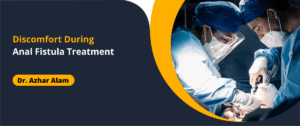

Laparoscopic Surgery: the Pros and Cons
With its promise of quicker recovery times and smaller incisions, it has gained widespread popularity. However, like any medical technique, laparoscopic surgery has its own set of advantages and drawbacks. In this article, we will delve into the pros and cons of laparoscopic surgery, examining its benefits and potential concerns.
Pros of Laparoscopic Surgery
Faster Recovery Times
One of the most significant benefits of laparoscopic surgery is its shorter recovery period. The smaller incisions and reduced trauma to the surrounding tissues lead to faster healing. Patients often experience less pain, require fewer pain medications, and can return to their daily activities sooner than those who undergo traditional open surgery.
Reduced Scarring
This types of surgery leaves behind minimal scarring. Unlike open surgery, which involves large incisions, laparoscopic procedures involve tiny incisions for the insertion of instruments. This translates to smaller scars that are not only cosmetically favorable but also contribute to lower infection rates.
Shorter Hospital Stays
Due to the less invasive nature of laparoscopic surgery, patients generally have shorter hospital stays. This not only reduces medical costs but also lowers the risk of hospital-acquired infections.
Less Postoperative Pain
Laparoscopic procedures result in less postoperative pain compared to open surgeries. The diminished trauma to muscles and tissues leads to reduced nerve irritation, minimizing discomfort during the recovery phase. This aspect enhances the overall patient experience.
Minimal Blood Loss
The precision of laparoscopic instruments and the smaller incisions contribute to minimal blood loss during surgery. This is a significant advantage, particularly for patients with pre-existing anemia or bleeding disorders. It also reduces the need for blood transfusions, decreasing the risk of associated complications.
Also Read: Why Awareness Of Breast Cancer Is Vital?
Cons of Laparoscopic Surgery
Technical Challenges
This type of treatment demands advanced surgical skills and hand-eye coordination. Maneuvering within the confined space of the body while relying on a video feed requires practice. Surgeons must undergo specialized training to overcome these technical challenges effectively.
Risk of Complications
Although this type of surgery is generally safe, there are risks of complications such as infection, bleeding, or damage to surrounding organs. While these risks are present in most surgical procedures, the confined space and limited visualization in laparoscopy can slightly elevate the likelihood of such complications.
Limited Surgical Precision
Unlike open surgery, laparoscopic procedures offer limited tactile feedback. Laparoscoppic Surgeons rely on visual cues and the sense of touch is diminished. In certain complex cases, this lack of tactile sensation can impact the precision of the procedure.
Longer Operating Times
This Laparoscopics treatment can sometimes take longer to perform than their open counterparts. The setup of equipment, the time required to create multiple small incisions, and the intricacies of maneuvering instruments within the body can extend the duration of the surgery.
Cost Considerations
While laparoscopic surgery’s benefits are evident, it can be costlier than traditional open surgery. The equipment used in laparoscopy, including high-definition cameras and specialized instruments, adds to the overall expenses. This cost factor can sometimes limit its accessibility.
Comparing Laparoscopic and Open Surgery
When comparing laparoscopic surgery with open surgery, the former holds several advantages. Open surgery involves larger incisions, longer hospital stays, and increased postoperative pain. However, open surgery allows for better tactile feedback and might be preferred in certain complex cases.
Also Read: Breast Cancer Symptoms & Causes
Factors Influencing Suitability
The suitability of this surgery depends on various factors, including the patient’s overall health, the complexity of the procedure, and the Laparoscopics specialist‘s expertise. A thorough evaluation is necessary to determine whether a patient is an ideal candidate for laparoscopic or open surgery.
Laparoscopy in Specific Medical Fields
This techniques are widely used across medical specialties, including gynecology, urology, and gastroenterology. Each field has its unique challenges and benefits when adopting laparoscopic approaches.
Patient Preparation and Recovery
Before laparoscopic surgery, patients need to follow specific guidelines for preparation, such as fasting and medication adjustments. After surgery, adhering to postoperative instructions is crucial for optimal recovery.
Future Directions in Laparoscopic Surgery
Advancements in robotics and imaging technologies are shaping the future of laparoscopic surgery. These innovations aim to enhance surgical precision, overcome current technical limitations, and further reduce invasiveness.
Frequently Asked Questions (FAQs)
Is laparoscopic surgery safer than open surgery?
Both approaches have their own set of risks and benefits. This surgery generally offers quicker recovery and smaller scars, but it might not be suitable for all cases.
What types of procedures can be performed laparoscopically?
Laparoscopic techniques are used in various surgeries, including gallbladder removal, hernia repair, and appendix removal, among others.
Are there any risks of complications unique to laparoscopic surgery?
While rare, complications like organ damage, bleeding, or infection can occur in surgery due to the use of specialized instruments and limited visualization.
How long does it take to recover from laparoscopic surgery?
Recovery times vary depending on the procedure and individual factors. In general, patients can expect a quicker recovery compared to open surgery.
What is the cost difference between laparoscopic and open surgery?
Surgery can be costlier due to specialized equipment and training requirements, but this can vary based on the specific procedure and healthcare provider.
Conclusion
This offers a range of benefits, including faster recovery, reduced scarring, and shorter hospital stays. However, it also presents challenges such as technical expertise requirements and potential complications. Patients and Laparoscopics surgeons must carefully consider these factors when choosing the most suitable surgical approach.
About Docor

Dr. Azhar Alam
MBBS (Honours), MRCS A (UK),
DNB General Surgery
FIAGES (Gastro Intestinal Surgery)
FMAS (Minimal Access Surgery),
MNAMS (New Delhi)
Consultant Gastrointestinal, Advanced Laparoscopic and Laser Surgeon
Assistant Professor of Surgery, KPC Medical College and Hospital




